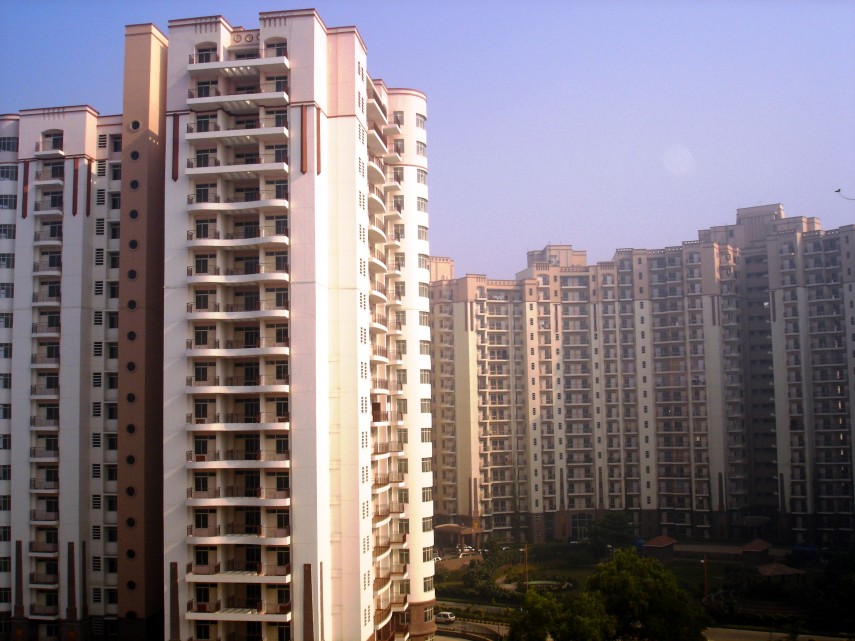Locked Down in an apartment for 21 days in Delhi and trying our best to maintain physical (or social) distancing, reveals lot of issues which designers would need to resolve after the post Wuhan-Covid-19 economy picks up again. The world will never be the same again after this crisis and long-lasting impacts in all fields will emerge slowly. I pen down some thoughts on how the design of apartments in India might change.
At the start, I must acknowledge that these are relevant only for the middle economic segment apartments of urban India. Most of the 68% rural population still don’t live in multi-storey apartments and suffer from their own specific challenges. On the other the economically weaker sections, urban & rural, suffer from living in extremely small units or slum towns which require a different discussion. The higher economic segment in India, living in apartments or bungalows above 2000 sq.ft. may already have enough space and flexibility to incorporate the points I mention. So, if I exclude the lower economic and highest economic segment, below ideas are relevant to 15-20 % of Indian apartment living population mostly in Urban areas. However, 15% – 20% of total 1300 million people still translates to about 195 -260 million Indian people who may look to improve their residential apartments to handle Covid-19 type situations in future.
1) Rise of the Anteroom: Amid the Corona-Virus scare, almost all families have tried to put into place entry protocols with the aim to decrease exposure to infection that may be carried by a family member coming from outdoors. Especially if you happen to be working during this lockdown, there is real need felt for a buffer space between entrance and the living areas. This type of entrance space is presently compromised or not provided in the middle economic segment apartment in India. This space would allow a person to remove shoes, leave dirty baggage and would ideally be connected to a shower/powder room right near the entrance of the apartment. Person coming in could then safely remove his dirty clothing, shoes and sanitise before entering the living spaces. This Anteroom/ entrance lobby space could also become useful to collect and isolate any packages/post coming into the house for a given period say 6-8 hours. I expect that solutions like specially designed storage cabinets with UV-lights for decontamination might emerge post Covid-19.
2) Desire for an Additional Room: In Indian middle-class families usually of at least 4-5 members the appreciation for an additional room which can be used as an isolation space with toilet, a private meditation/yoga space or a home office/study is growing rapidly. Even if the bedrooms become smaller there appears enough reasons for valuing this additional separate room. Though I expect this need may spur these types of apartments to actually become bigger in area. Today each family during the lockdown has usually two: husband plus wife working remotely with the one or two kids attending virtual classrooms. It is the largest Work from Home Experiment post Industrialisation. This means there is a real need for private space inside the house to effectively work from home in quiet and concentration. For the first time Indian families are forced to consider how they would self-quarantine or isolate in case of an infection. What it requires is a room with dedicated toilet, good ventilation, exhaust fans to throw contaminated air outside.
Some apartments provide a small study, but the importance and design of this type of space has suddenly grown tremendously and so must the design attention to it.
3) Design for Great Indoor Air Quality: During the past year there has been growing aware of poor quality air in Indian cities and its health impacts. Schools have been shut numerous times in Delhi due to poor air quality forcing parents to keep kids at home. Covid-19 Lockdown has recently showed drastic improvements in air quality of cities mainly due to decrease of human activity. Covid-19 also has emphasized the importance to well ventilate the indoor spaces we occupy. Natural ventilation ensured by good architectural design can majorly improve indoor air quality and safeguard our health. At other times when outdoor air is too polluted, low-energy air purifiers or filtering solutions must be developed for these apartments. Full Mechanical Ventilation still remains too expensive a solution for the Indian Market. I believe this desperate need for good quality air and other health and wellbeing design aspects of apartments will gain lot of traction in the coming months.
4) Prized Community Grocery and Vegetable Shop: Only the larger of Indian apartment colonies incorporate daily shopping and amenities into the design. Easy and safe access to daily shopping, without the pressures of queuing or exposure to densely populated markets, has today become a prized asset for each apartment community. The colonies which had provided it are reaping the benefits and others are looking to develop these facilities. This is quite a real need, since during this lockdown most of the internet delivery services ( Amazons and Likes ) have failed to reach the people in time while the local shops have provided important day to day sustenance. Very possibly apartment colonies in future will provide much more enhanced areas for shopping and common amenities than in the past.
Many more subtle but long-term shifts in user requirements and perceptions will occur by the time the world gets past the Wuhan-Covid-19 crisis. Lets wait and watch!
Author : Harsh Thapar , is an Architect and Sustainable Design Expert.

